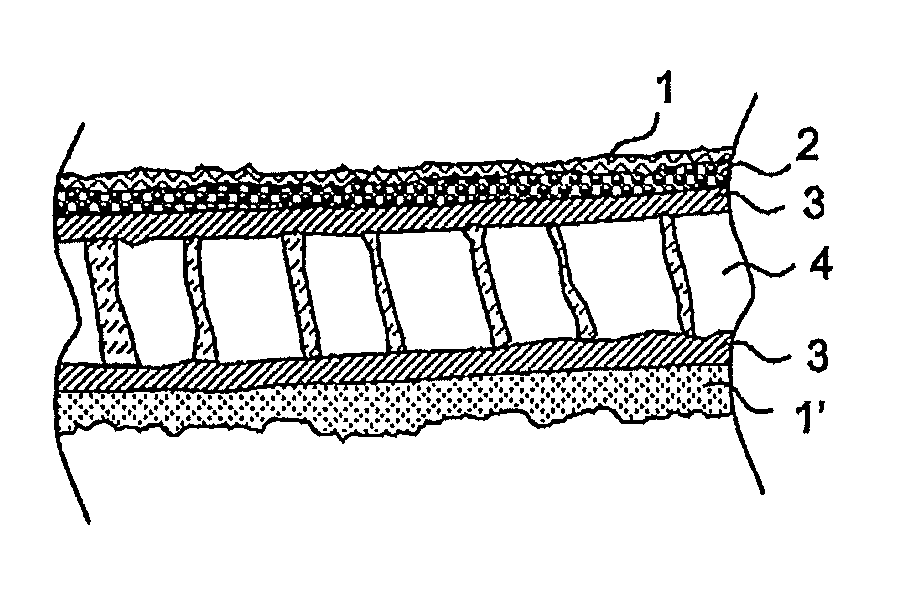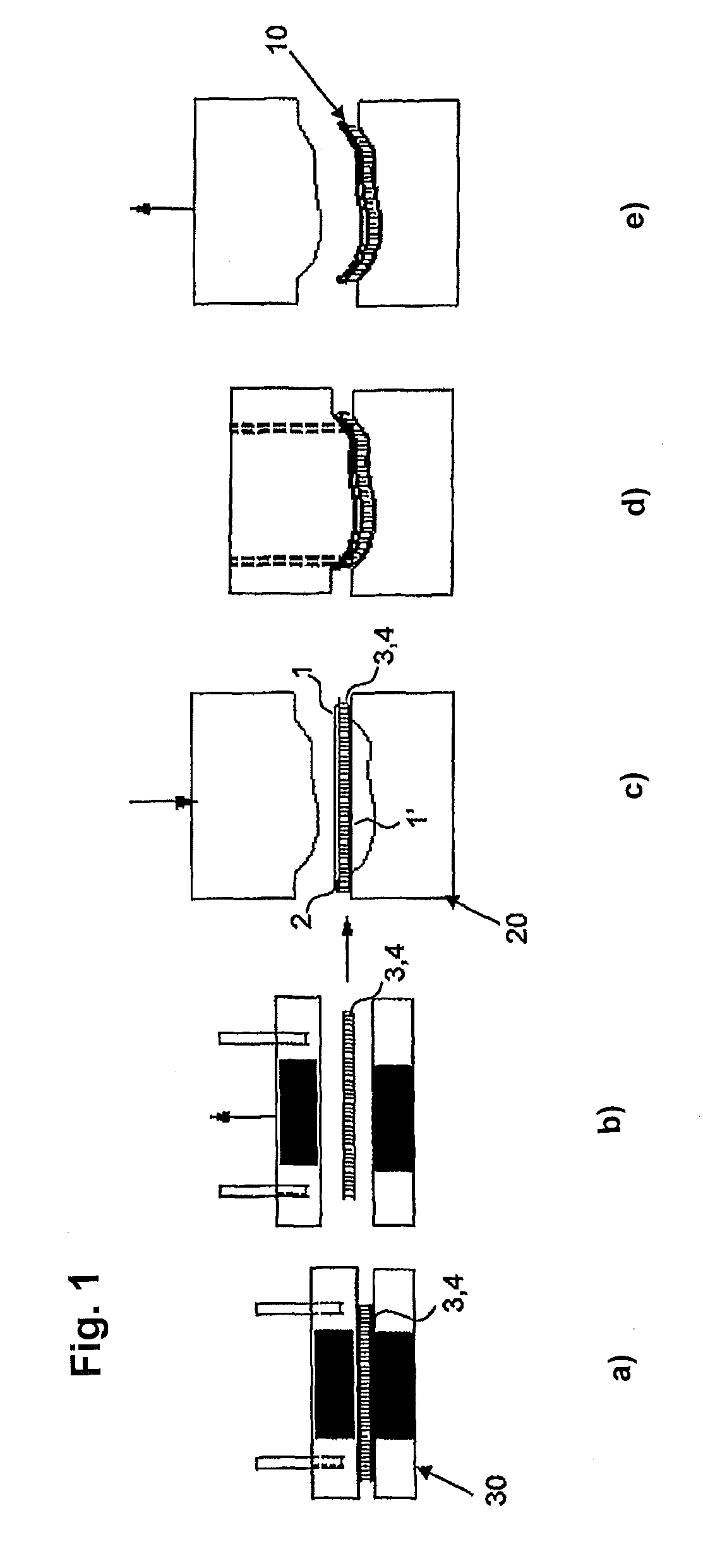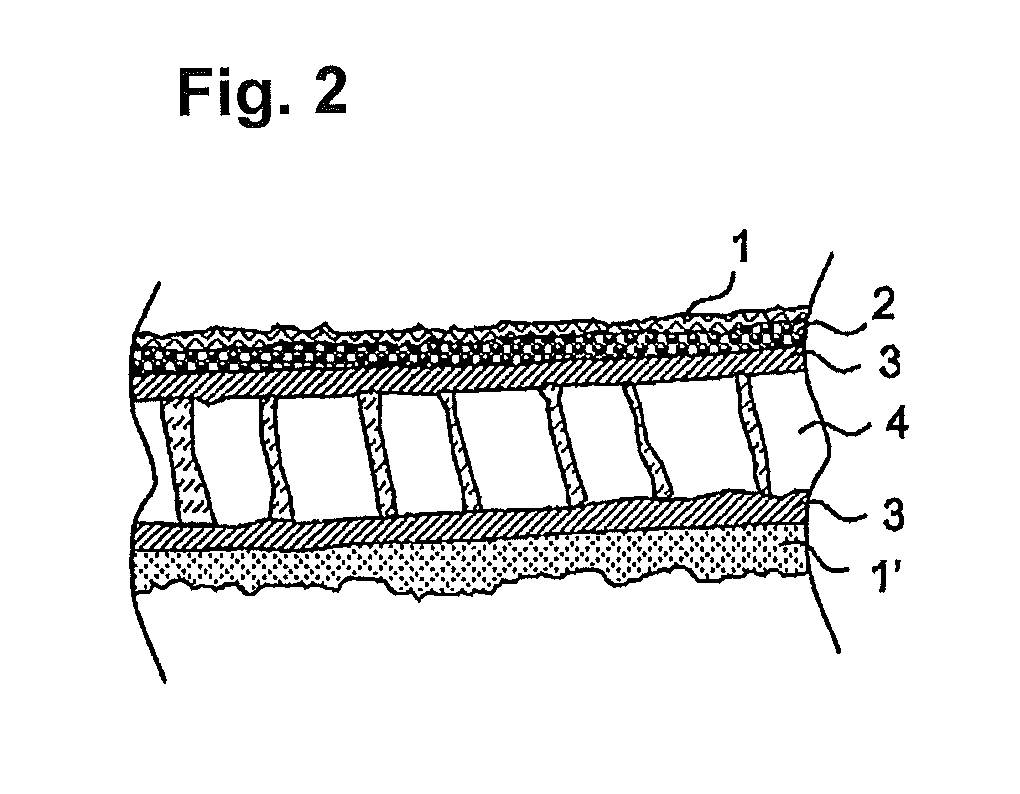Sandwich composite component and production process therefor
a composite component and composite technology, applied in the field of sandwich components, can solve problems such as deformation zones and surface defects, and achieve the effect of reducing the proportion of fibres in the outer layer
- Summary
- Abstract
- Description
- Claims
- Application Information
AI Technical Summary
Benefits of technology
Problems solved by technology
Method used
Image
Examples
Embodiment Construction
[0034]A sandwich component according to the invention comprises at least one decorative layer on the visible side of the component as well as the honeycomb core and the fibre-reinforced thermoplastic outer layers, wherein, by the use of a foam layer as an intermediate layer between the decorative layer (which can be, for example, textile goods) and the sandwich outer layer, this can serve for the lamination of surface defects.
[0035]An in-situ lamination in the moulding pressing tool 20 has been proved as a cost-efficient production process. The production of the sandwich component 10 is depicted schematically in FIG. 1.
[0036]In step a), a multi-layer arrangement made from fibre-reinforced thermoplastics 3 for the formation of the outer layers and the honeycomb core layer 4 arranged therebetween is heated in a heating tool 30, e.g. a hot press. Organic sheets or hybrid textiles made from reinforcement and matrix fibres are, for example, considered as fibre-reinforced thermoplastic la...
PUM
| Property | Measurement | Unit |
|---|---|---|
| density | aaaaa | aaaaa |
| thickness | aaaaa | aaaaa |
| thickness | aaaaa | aaaaa |
Abstract
Description
Claims
Application Information
 Login to View More
Login to View More - R&D
- Intellectual Property
- Life Sciences
- Materials
- Tech Scout
- Unparalleled Data Quality
- Higher Quality Content
- 60% Fewer Hallucinations
Browse by: Latest US Patents, China's latest patents, Technical Efficacy Thesaurus, Application Domain, Technology Topic, Popular Technical Reports.
© 2025 PatSnap. All rights reserved.Legal|Privacy policy|Modern Slavery Act Transparency Statement|Sitemap|About US| Contact US: help@patsnap.com



